SOUTH KOREA
Lucky Goldstar and the Rockets – one country’s journey from poverty to prosperity
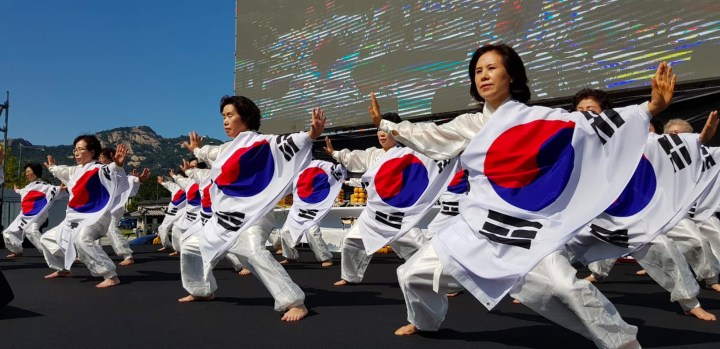
‘Get on with it’ best summarises the thinking of General Park Chung-hee, the boss and president of South Korea for 18 years. Or as he put it more politely, ‘We need wordless deeds and ambitious construction programmes.’ But was it authoritarianism that worked in transforming Korea from a backwater to prolific exporter, or something else?
While he was democratically elected five times, President Park Chung-hee was no democrat. His instinct and focus were elsewhere. He oversaw a rapid economic take-off, driven by an export-led industrialisation strategy. From 1965 to 1990, the country achieved an average growth of 9.9%, the highest in the world, increasing its annual exports more than five thousand times. In the process, along with the other Asian “Tigers” (Hong Kong, Taiwan and Singapore), it altered perceptions and expectations of development worldwide.
South Korea’s economy grew as much in a single generation as America did over a century. Today this growth model has been taken over by China, leading to a massive decline in global poverty over the last three decades. Both China and Korea are used to promote a “growth through authoritarianism” or “development through a benevolent dictator” thesis.
Yet the evidence shows that the key components to Korea’s path were far more complex than just having a strongman; indeed, Park’s style of rule threatened and ultimately undercut his success. But there was much more to it than perspiration and militarism. With a belief in Shin-Sang-Pil-bul (“Never fail to reward a merit”), Park’s ideology centred on what Sung Hee Jwa, the head of the Foundation named in the former president’s memory, describes as “economic discrimination”, not egalitarianism, involving the insertion of competition into economic policymaking, from favouring performing companies on their export record to villages on their delivery to their citizens.

Still a favourite after all these years.
In the wake of the devastating war on the Korean peninsula (1950-53), which cost four million casualties, destroyed 70% of infrastructure and displaced 10 million, then half its population (it’s 51 million today), South Korea was one of the world’s poorest countries. In 1960 its annual income per capita was then just $80, lower than the sub-Saharan African average. It seemed then to have few possibilities, given its poor store of natural resources, low savings, and tiny domestic market.
It was poor, broke, insecure and seemingly with few options.
Park had come to power after Syngman Rhee, the country’s inaugural president and hero of the war, was forced out by a student-led uprising over his increasing authoritarian rule and widespread corruption.
Whatever his excesses, Rhee laid a foundation for Korea’s subsequent success through a land reform programme, strong relationship with key ally (and aid provider) in the United States, and education drive. Illiteracy fell from 70% to 15% in a decade.
Although a democratic government initially took over from Rhee, Park led a coup in May 1961 upon learning he was to be retired from the military. Park’s regime was no less authoritarian, but as an admirer of Bismarck and student of German and Japanese industrialisation, he had a far more ambitious economic plan than the 84-year old Rhee. At the time South Korea was three times poorer than its northern neighbour in per capita GDP terms, Seoul’s politicians being wedded to the idea of agrarian-led growth.
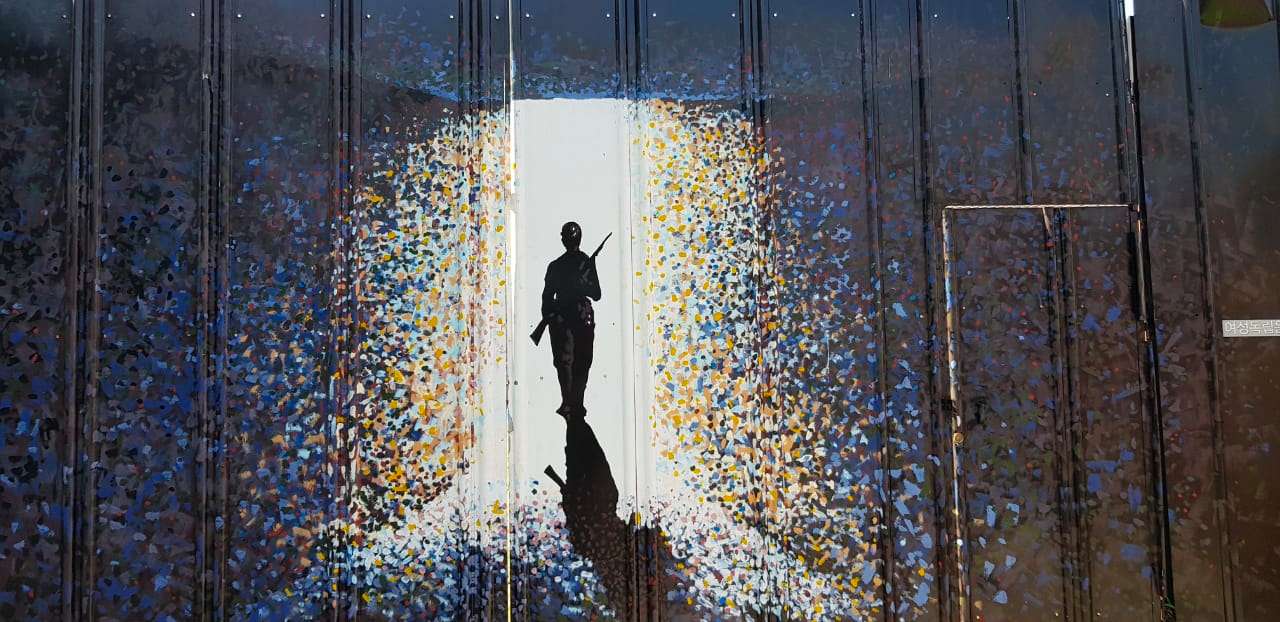
A history of militarism – and a longer one of democratic struggle. Mural at Seoul’s Seodaemun Prison.
Park’s strategy by contrast was dependent on shifting from import substitution to export-led industrial growth given the tiny domestic market. Labour-intensive manufactured exports offered a competitive advantage, but the challenge was to build businesses of scale.
Government incentives were to play a part, but first he had to get the businessmen on side. As in much of East Asia at the time, much bigger business favoured rent-seeking from American aid, which provided as much as half of the government budget in the 1950s.
Authoritarianism might have help to speed things along. Park swiftly gained the attention of business by locking up 12 captains of industry at Seoul’s Seodaemun Prison, which had gained notoriety under Japanese colonial rule, under a “Special Measure for the Control of Illegal Profiteering”. This was a blunt signal that the era of crony capitalists, those who Park termed “liberation aristocrats” who took a slice while doing little for their country, was over. Those suspected of having made illicit gains were “invited” to form a Committee for Economic Reconstruction, a forerunner to the Federation of Korean Industries.
Later, entrepreneurs were regularly called to the presidential palace to report on their progress. Park proved a willing listener in formulating successive five-year national development plans from 1962, early on sending out teams to gather information from Hong Kong and Japan.
Despite some early recalibration of initial targets, which necessitated liberalising the exchange rate, by 1964 Korea reached a benchmark $100-million in exports. Thereafter 30 November became National Export Day, on which companies were publicly ranked by the scale of their achievement.

They have come a long way, fortunately. KIA’s early T-600 truck.
The start was modest in developing textile, footwear, toy and wig industries. But the result was the development of large-scale conglomerates, the chaebols, modelled on the Japanese zaibatsu, of the likes of Samsung and Hyundai. Seoul’s outstanding National Museum of Korean Contemporary History details the transformation from an agrarian to high-tech society, displaying the first attempts at a Korean radio in Lucky Goldstar’s white plastic A501 of 1959, the agricultural Kia three-wheeler truck and Hyundai’s early, clunky 1982 Pony sedan through to the Baekgom missile produced under the Yulogok military modernisation programme.
Lucky Goldstar became LG, and Kia and Hyundai are now global brands. Hyundai’s car factory in Ulsan is the world’s largest, where 34,000 workers can produce 5,600 vehicles daily, a big jump from assembling Ford Cortinas under licence in 1968. Such chaebols, family-managed conglomerates, started small but were responsible for two-thirds of the growth in the South Korean economy during the 1960s.
Park didn’t just strong-arm businesses, but provided the conditions they needed, especially tax breaks and export finance. And crucially his administration invested heavily in infrastructure, including the nationwide expressway system and the Seoul subway.
He was also willing to innovate and evolve his plan. Once light manufacturing was up and running, he turned his attention to building heavy industry in the late 1960s, focusing on automotive, chemicals, ship-building, steel and electronics. Aid was used creatively. For example, the steel plant at Pohang was funded by Japanese war reparations.
Having been born into a poor, peasant family, in 1970 Park also turned his attention to modernising rural life through the Saemaul Undong, or “New Villages”, focusing on improving basic conditions, then income and infrastructure.
And while Park’s authoritarianism may have got the economy moving quickly, it also nearly undid the whole thing.

‘I just want to say one word to you. Just one word … Are you listening? … Plastics.’ Lucky Goldstar’s A501.
“Essentially there were two phases to Park’s rule,” says Park Jin, the head of Parliament’s National Future’s Institute. “Between 1961 and 1972 he was a remarkable president, pressurising the country for development. After 1971, when he nearly lost his re-election to Kim Dae Jung, he changed the constitution to allow himself a third term and to be elected indirectly via an electoral college system, rather than directly so. He remained economically sound but became politically terrible.”
Park introduced, amid growing public opposition and student-led protests, the Yushin (renovation) constitution in November 1972. He was killed by his former classmate at the military academy Kim Jae-gyu, the director of the Korean Central Intelligence Agency. What became known as the “10.26 incident” inside the Blue House presidential compound in October 1979 set in train events resulting in the country’s democratisation in 1987. Park had apparently rebuked Kim for not being tough enough on protesters in Busan, so he shot him.
A coup two months later brought General Chun Doo-hwan to power until 1987. Willing to take advice from the experts in the Korean Development Institute, Chun cooled what had become an overheated economy, including freezing the national budget for two years in 1983-4, setting the stage for a subsequent export boom as Korea’s competitiveness increased. Chun’s party, the Democratic Justice Party, and its leader, another general and Hanahoe member, Roh Tae-woo, won the first election in 1987 against veteran activists Kim Dae-Jung and Kim Young-Sam who effectively split the opposition vote. Kim Young-Sam thereafter served a term in alliance with Roh from 1993-98. The transition from autocracy to democracy was marked by key events, including the hosting of the Olympics in 1988, signalling Seoul’s emergence into the global community of nations, and the election of liberal political icon Kim Dae-jung 10 years later.
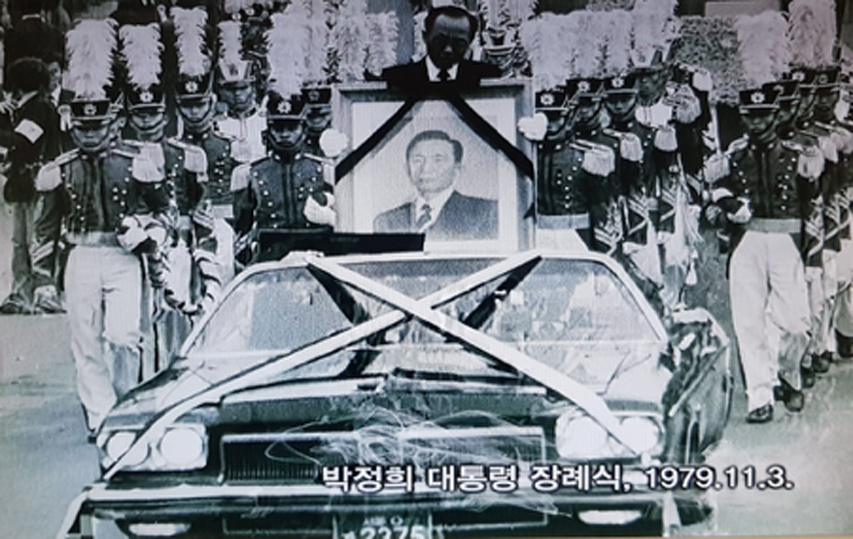
President Park was killed by the head of his CIA, a former Military Academy classmate, ostensibly over a dinner argument about taking a tougher line on domestic protestors.
Despite the Asian financial crisis, growth in Korea continued apace, GDP per capita reaching $20,000 in 2006, rising again to $30,000 by 2017, making it the world’s 11th largest economy, and fifth largest exporter.
Is it possible to conclude from Korea that authoritarianism is necessary for economic triumph?
While it’s a tempting single, silver bullet developmental answer, authoritarianism is no guarantee of success: only look at the record of Mao Zedong or the myriad African authoritarian failures. It only works if you have a “good” authoritarian, and the easiest way to get rid of a bad one is, paradoxically, through democracy.
“If you have a benevolent dictator,” says Park Jin, “it would be a good thing, at least in the early stages. But there is no guarantee that it will be a good thing; that the person in charge will turn out to be good. Rather, democracy is a safer bet.”
Korea also enjoyed three features largely overlooked in the pro-authoritarian argument: first, while Park’s regime can hardly be described as liberal, there was an active civil society throughout, despite the absence of a free media and pervasive militarism. Indeed, Park came to power because of the people’s activism against Rhee, and was re-elected five times.
And whereas Park may have been no liberal, by the standards of the (Cold War) time and his region, the extremes of his rule were unexceptional, especially considering the overarching security imperative and paranoia.
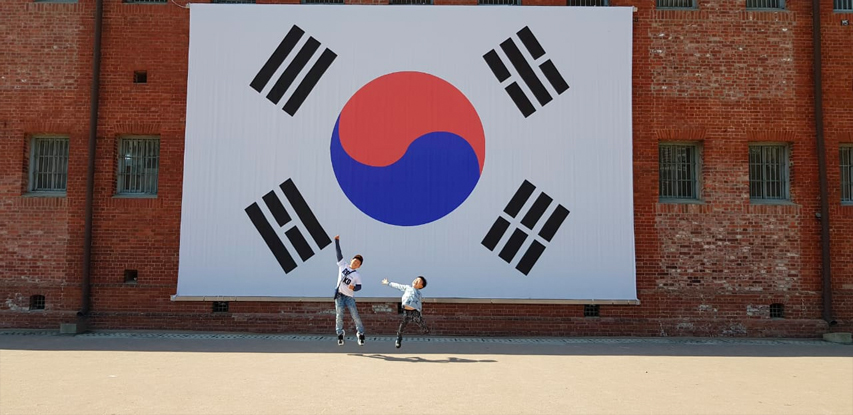
The benefits of growth. Infant mortality reduced from 9.6% in 1960 to 0.4% in 2010, life expectancy over the same period from 54 to 80, and teacher/children ratios from 1/47.4 in 1980 to 1/18.7 in 2010.
Yet the overriding national mood ensured that liberal democracy was not only inevitable, but that when it happened, the transition stuck.
“Everyone knew what democracy was in Korea,” says Choon Kun Lee, of Korea’s Institute for Strategic Studies.
Korea’s left and right are close on this issue.
“Authoritarianism is not needed for development, both of the economy and of our politics,” says Nam Kyu-Sun, the head of the Korea Democracy Foundation, and a former student activist. To the contrary, “if we didn’t have 18 years of authoritarianism, the economy would have been more developed.”
Professor Jwa emphasises that there are “no grounds” to argue that Park’s success is a by-product of his authoritarian politics and similarly “to claim that no lessons can be learned for 21st century democracy. Rather,” he adds, “democratic leadership that embraces economic discrimination is a precondition for economic take-off”.
The second factor explaining why authoritarianism was not critical, as Jin again notes, is that “there was always a well-functioning civil service. Our national exam for civil servants started 1,000 years ago, and our bureaucracy was modernised by Japan during their period of colonial rule.”
And third, crucially, unlike the record of authoritarian socialist regimes, rather than fearing the creation of alternative centres of wealth and power, Park realised that the success (or not) of business would define Korea. As a result, the transition has been staggering. Samsung was, for example, once a small exporter of agricultural and fishery products. Hyundai started as a small car repair business. The LG Group was once a factory making face cream and toothpaste. SK started out as a small textile manufacturer and has grown into SK Telecom. Embracing corporate growth has fundamentally facilitated Korean economic development.
Korea’s transformation from a poor, developing to a developed country is known as the “Miracle on the Han River”. But it was no miracle, just one requiring a lot of hard work, discipline, leadership, innovation and education, incentivisation, a focus on growth above all else, and, ultimately, democracy. DM
Dr Mills has been in Korea for the Brenthurst Foundation. This is taken from a longer Discussion Paper available on www.thebrenthurstfoundation.org










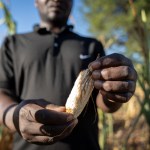







 Become an Insider
Become an Insider